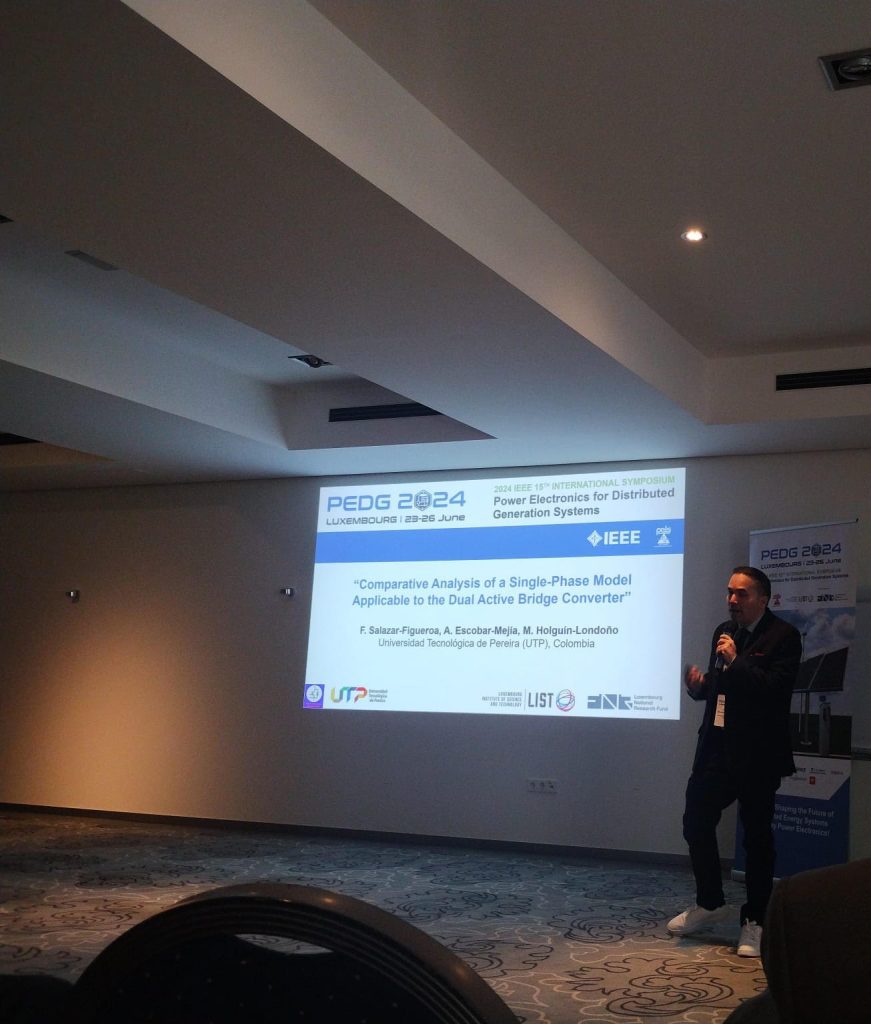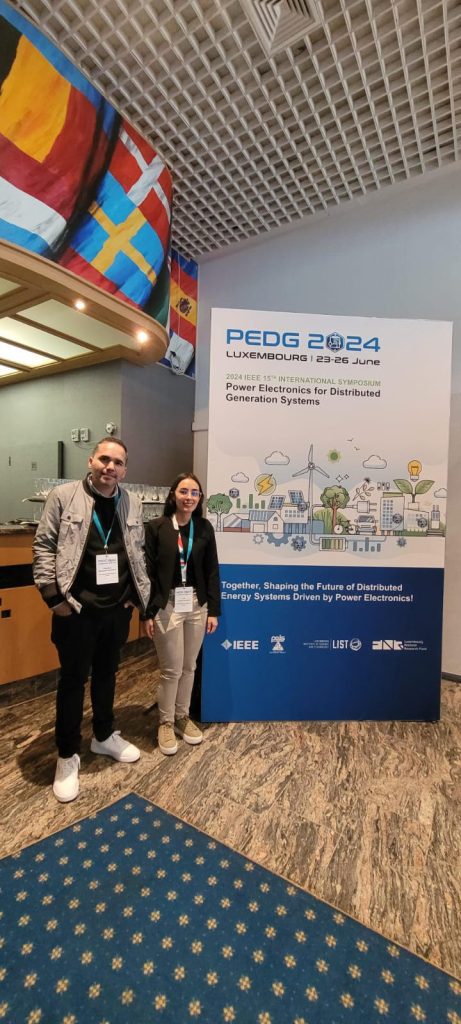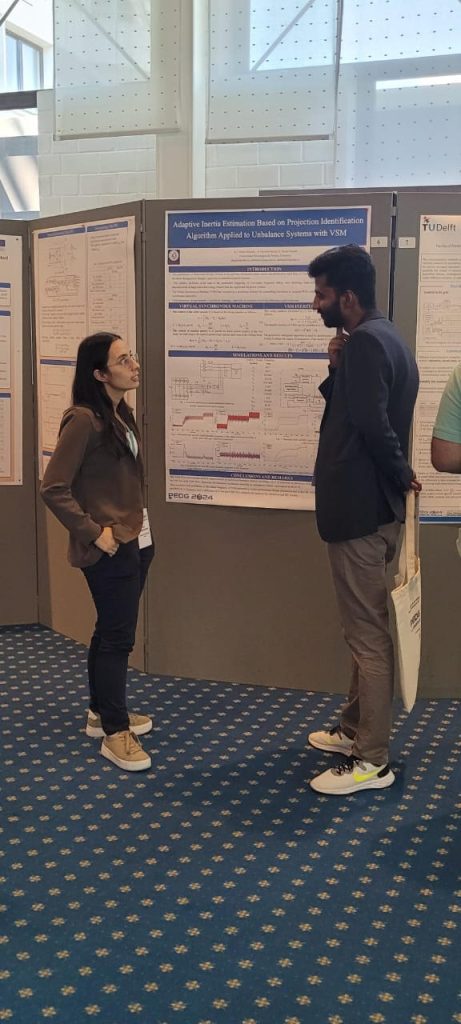El pasado mes de junio la estudiante de Doctorado en Ingeniería Ana Julieth Marin Hurtado y el estudiante de Maestría en Ingeniería Eléctrica Francisco Salazar Figueroa, participaron con sus trabajos de doctorado y maestría en el 15th Simposio Internacional de Electrónica de Potencia para Sistemas de Generación y Distribución (PEDG 2024) organizado por IEEE y el Instituto de Ciencia y Tecnología de Luxemburgo en la ciudad de Luxemburgo.



Las ponencias realizadas por los estudiantes fueron: “Adaptive Inertia Estimation Based on Projection Identification Algorithm Applied to Unbalance Systems with VSM” y “Comparative Analysis of a Single-Phase Model Applicable to the Dual Active Bridge Converter”.
La participación de los estudiantes en el evento fue posible gracias al apoyo institucional y facilitó la conformación de redes de cooperación para el intercambio de conocimiento y el trabajo colaborativo.
Los estudiantes pertenecen al grupo de Investigación en Electrónica de Potencia y trabajan bajo la tutoria del profesor Andrés Escobar Mejía, director de la Maestría en Ingeniería Eléctrica.
Adaptive Inertia Estimation Based on Projection Identification Algorithm applied to Virtual Synchronous Machine
Abstract—Inertia is an important property in power systems to counteract frequency deviations due to power fluctuations. However, the proliferation of Renewable Energy Sources (RES) in the grid has decreased system inertia because they do not have or have a small rotating mass. This produces stability challenges as increasing the frequency deviation and rate of change of frequency, which can produce power electronics converter malfunctions, disconnection of large renewable generation, black-out, and load shedding. The Virtual Synchronous Machine (VSM) has emerged as a promising solution for controlling converters to integrate RES, emulating the inertial response
of conventional synchronous generators. Nevertheless, designing VSM parameters presents a significant challenge, especially in scenarios involving unbalanced grid conditions. This paper proposes an adaptive inertia control scheme using an Orthogonal Projection Algorithm (VSM-POA) to calculate the inertia of VSM to improve the stability of an unbalanced power system. This approach determines the inertia based on an identification algorithm that analyzes the frequency deviations in the presence of torque changes of the VSM to compute the inertia. To show the performance of the VSM-POA approach, time-domain simulations will be carried out in a four-wire system with
an unbalanced current considering load variations. Moreover, the approach will be evaluated in a Hardware-In-the-Loop (HIL) structure. Results indicate that the VSM-POA controller exhibits a lower Rate of Change of Frequency (ROCOF), reduced maximum frequency deviation, and decreased frequency oscillations compared with VSM with constant inertia.
Comparative Analysis of a Single-Phase Model Applicable to the Dual Active Bridge Converter
Abstract— The dual active bridge (DAB) has become an attractive solution in microgrids due to its versatility in power networks that include renewable sources. At the same time its applications have demanded the introduction of complex modulation and control techniques that require specific hardware. Using hardware-in-the-loop (HIL) systems for a real-time implementation, helps to predict the behavior of a system for different operating conditions. This equipment has limited resources in their system, so it is necessary to work with more effective models without losing precision in the process.
In this paper a State Variable Model (SVM) implemented in block diagram is proposed. This is compared with the generalized averaged model (GAM) and the conventional Switching Model (SM) using the circuit schematic diagram in Matlab/Simulik and PLECS programs. To confirm this, the processing time in Simulink is compared and the system resources required in PLECS RT Box 1 are evaluated. Therefore, not only time and resources are considered, but also signal accuracy. For practical purposes the system under tests is a single-phase DAB connected to a dc source at the input and a resistance at the output. Single-Phase Shift (SPS) modulation is used during open-loop and close-loop. Time-domain simulations show that the SVM is an exact model that requires fewer processing time than SM and, despite using more resources than the GAM, it can provide more detailed information from the dc output signals.











